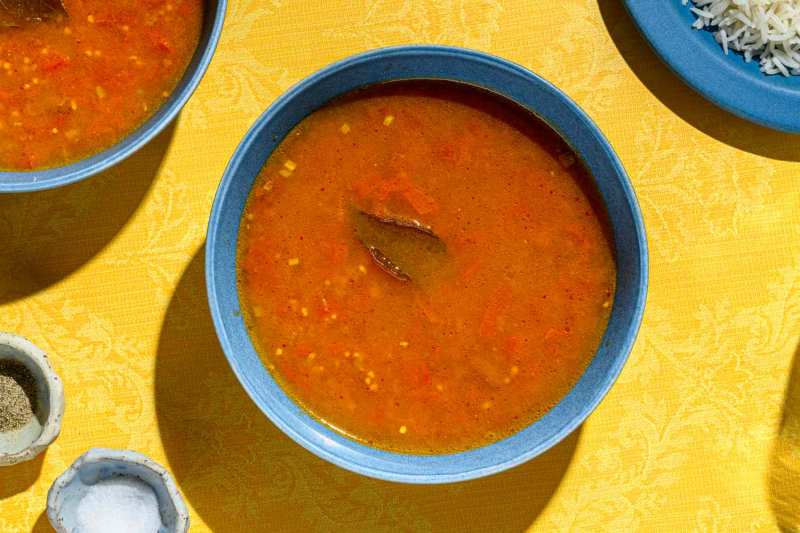Rasam warms you up from the inside out
Prep: 15 mins
Cook: 20 mins
Total: 35 mins
Servings: 2 to 4 servings
Yield: 4 cups rasam
The word rasam comes from the Tamil (one of the oldest Indian languages) word “rasa”, which translates to essence, sap, or juice, and by extension, a soup. And very simplistically, that is what it is. A clear hot and healing soup to seek out on a day when you need a warm hug in a bowl.
How Is Rasam Served?
Usually eaten with plain rice and a vegetable side such as a thoran (stir-fried cabbage, carrot, or green beans), rasam can be found in all four South Indian states. This is interesting because otherwise these states have diverse cuisines of their own, with rasam being one of the few dishes that found its way into the cuisines of Karnataka, Tamil Nadu, Andhra Pradesh and Kerala. Obviously each has their own peculiarities, ranging from some being more sour than others, some being thicker or more peppery, some containing jaggery, and so on.
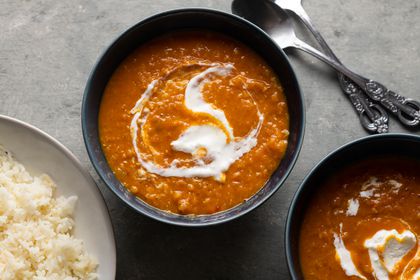
The Legend of Rasam
It is believed that rasam was invented in an ancient Indian king’s kitchen. One day, when one of the princes took ill, his father declared a prize for anyone who would help the son recover, alongside ensuring he is well-fed. A cook came up with a healing concoction to bust the flu, and then was born rasam. While you can ignore this as an old wives’ tale, rasam’s potent peppery notes do have a warming effect on a cold night.
My rasam is a simple clear broth made with a handful of ingredients that are usually common in an Indian kitchen: coriander, chillies, tomato, and garlic. Rasam is great on nights when you don’t want to whip up a big meal, and simply want to eat bowls full of clear broth with rice and dollops of ghee.
Tips for Making Rasam
- Make the rasam powder ahead of time—It’s best to pre-make your rasam powder and store in an air-tight jar. It can be stored for up to two weeks in the refrigerator.
- Use freshly ground black pepper—Because black pepper is a key flavoring in rasam, it’s best to start with whole peppercorns and grind them right before using in the recipe.
- Serve it in a glass—Rasam is best served in a glass versus a bowl. The clear soup should be served in a way that it is easy to drink.
- Substitute for byadgi chillies—Byadgi chillies are very spicy, so you can substitute dried bird’s eye (Thai) chillies, àrbol chillies, or chiltepins. Use an equal number of Thai or àrbol chillies or one tablespoon of the tiny chiltepins.
“It’s worth shopping around for the ingredients you might not be familiar with because everything blends together incredibly well with the tomatoes. Use the freshest spices you can to get the full impact of the soup.” —Noah Velush-Rogers

A Note From Our Recipe Tester
Ingredients
For the Rasam Powder
-
1/4 cup coriander seeds
-
2 tablespoons cumin seeds
-
8 dry byadgi (bedgi) chillies
-
2 teaspoons fenugreek seeds
-
4 fresh curry leaves
-
1 teaspoon turmeric powder
-
1/2 teaspoon asafoetida
For the Rasam
-
2 tablespoons vegetable oil
-
2 tablespoons mustard seeds
-
2 teaspoons cumin seeds
-
10 fresh curry leaves
-
10 cloves garlic, minced
-
3 large tomatoes, finely chopped (about 2 pounds)
-
1/2 teaspoon fine salt, more to taste
-
2 tablespoons rasam powder (recipe above)
-
2 tablespoons tamarind pulp
-
1 tablespoon jaggery or brown sugar
-
4 cups water
-
2 tablespoons minced fresh cilantro stems
-
1/2 teaspoon freshly ground black pepper
Steps to Make It
Make the Rasam Powder
-
Gather the ingredients.
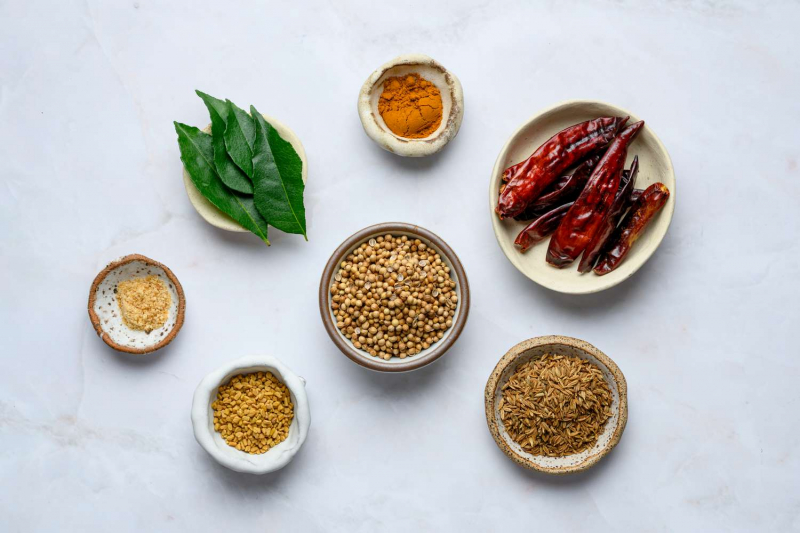
-
Heat a medium dry skillet over medium-low for 30 seconds. Add 1/4 cup coriander seeds, 2 tablespoons cumin seeds, 8 dry byadgi chillies, 2 teaspoons fenugreek seeds, and 4 fresh curry leaves and dry-roast for 2 minutes or until fragrant.

-
Transfer the spices to a small bowl and stir in 1 teaspoon turmeric powder and 1/2 teaspoon asafoetida. Blend it into a fine powder with a spice grinder and set aside.

Make the Rasam
-
Gather the ingredients.
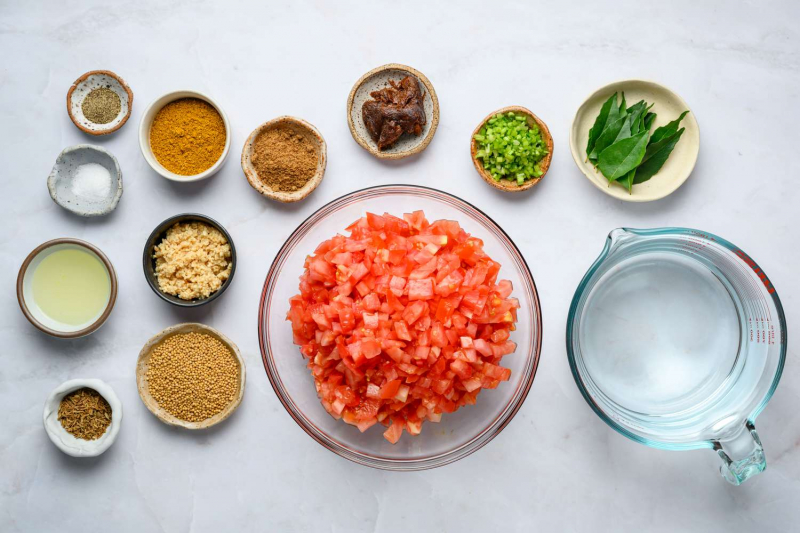
-
Heat 2 tablespoons vegetable oil over medium-low in a large saucepan until it shimmers. Add 2 tablespoons mustard seeds, 2 teaspoons cumin seeds, and 10 fresh curry leaves and stir.
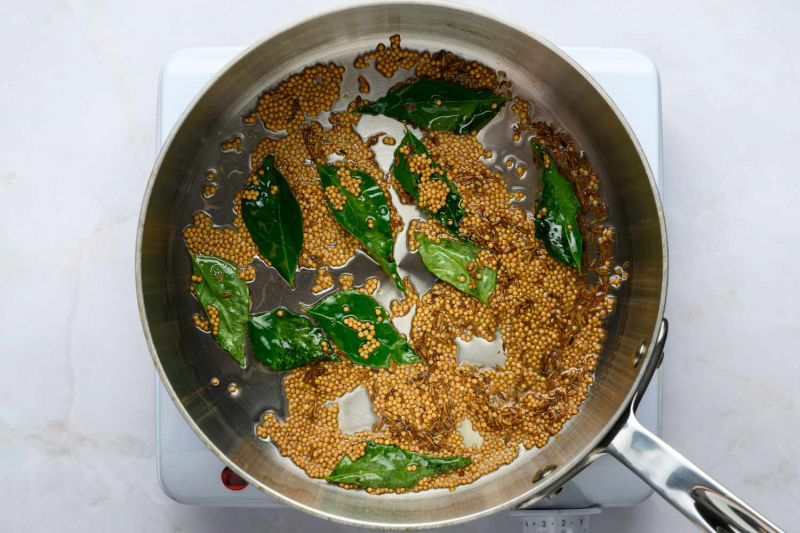
-
Once the spices begin to crackle, add 10 medium cloves garlic, minced. Saute the garlic until fragrant, about 30 seconds.

-
Add 3 large tomatoes, finely chopped (about 2 pounds), and 1/2 teaspoon fine salt and cook, stirring occasionally, until the tomatoes break down, 8 to 9 minutes.

-
Increase the heat to medium and add 2 tablespoons reserved rasam powder, 2 tablespoons tamarind pulp, 1 tablespoon jaggery or brown sugar, and 4 cups water. Bring to a boil, reduce to a simmer and let cook for 5 to 6 minutes.

-
Add 2 tablespoons minced fresh cilantro stems and simmer for 2 minutes more.
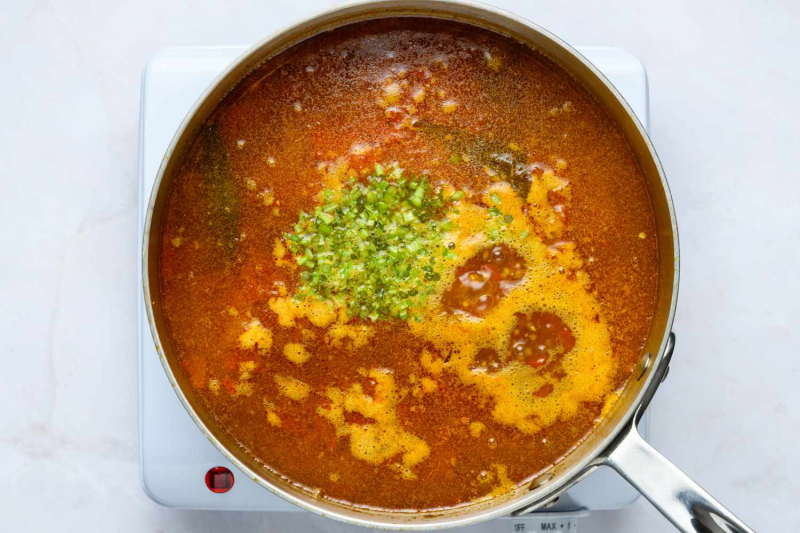
-
Add 1/2 teaspoon freshly ground black pepper, adjust the seasoning with salt, if desired, and serve hot.
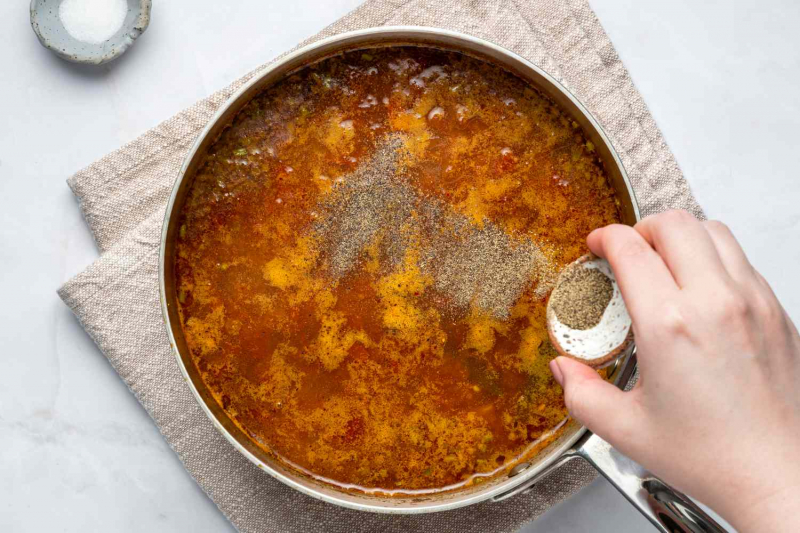
How To Store
For the best flavor, eat rasam on the same day that it is made. However, it can be stored for up to 3 days in an airtight container in the refrigerator. Reheat it gently in a saucepan on the stovetop.
Feeling Adventurous? Try This:
Small variations can be made to this base recipe depending on your tastes. For more sweetness, increase the amount of jaggery or brown sugar. For a bigger sour kick, add more tamarind. Scale the rasam powder up or down or modify the rasam powder recipe by adding more chillies for more heat.
| Nutrition Facts | |
|---|---|
| Servings: 2 to 4 | |
| Amount per serving | |
| Calories | 148 |
| % Daily Value* | |
| Total Fat 9g | 12% |
| Saturated Fat 1g | 4% |
| Cholesterol 0mg | 0% |
| Sodium 290mg | 13% |
| Total Carbohydrate 17g | 6% |
| Dietary Fiber 4g | 13% |
| Total Sugars 8g | |
| Protein 3g | |
| Vitamin C 22mg | 111% |
| Calcium 87mg | 7% |
| Iron 3mg | 15% |
| Potassium 479mg | 10% |
| *The % Daily Value (DV) tells you how much a nutrient in a food serving contributes to a daily diet. 2,000 calories a day is used for general nutrition advice. | |
